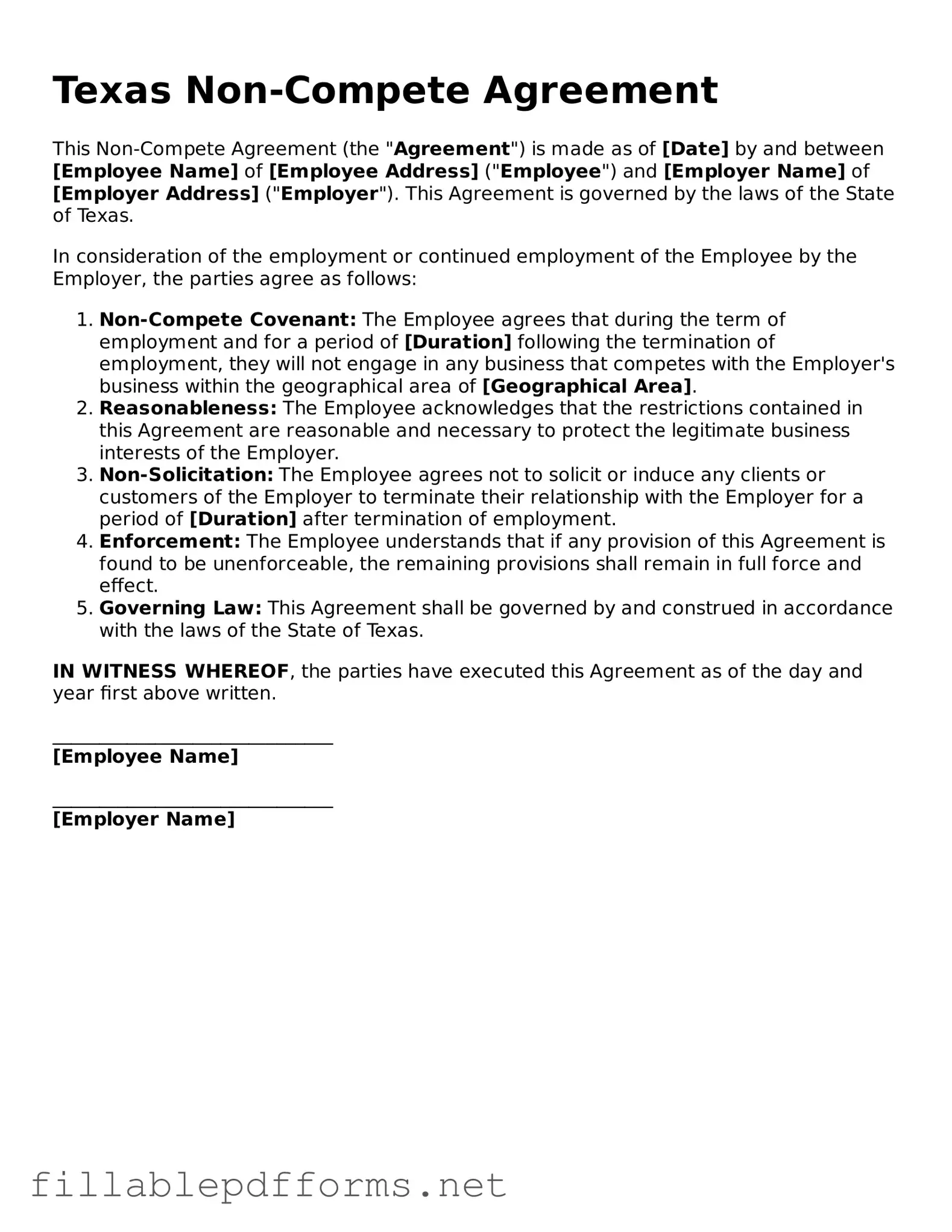Attorney-Verified Non-compete Agreement Form for Texas State
A Texas Non-compete Agreement is a legal contract that restricts an employee's ability to work for competitors or start a similar business after leaving their current employer. This type of agreement aims to protect the employer's business interests and confidential information. Understanding the nuances of this form is essential for both employers and employees navigating the Texas labor market.
Launch Editor Here
